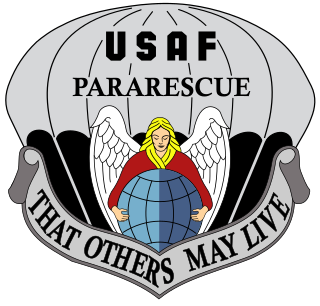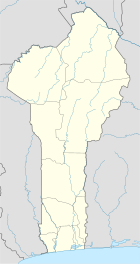
Swissair Flight 111 was a scheduled international passenger flight from John F. Kennedy International Airport in New York City, United States, to Cointrin International Airport in Geneva, Switzerland. This flight was also a codeshare flight with Delta Air Lines. On 2 September 1998, the McDonnell Douglas MD-11 performing this flight, registration HB-IWF, crashed into the Atlantic Ocean southwest of Halifax Stanfield International Airport at the entrance to St. Margarets Bay, Nova Scotia. The crash site was 8 kilometers from shore, roughly equidistant from the tiny fishing and tourist communities of Peggy's Cove and Bayswater. All 229 passengers and crew on board the MD-11 were killed, making the crash the deadliest McDonnell Douglas MD-11 accident in aviation history.

UTA Flight 141 was a chartered international passenger flight operated by Guinean regional airline Union des Transports Africains de Guinée, flying from Cotonou Airport in Cotonou, Benin, to Kufra Airport in Kufra, Libya. On 25 December 2003, the aircraft crashed into the Bight of Benin, killing 141 people, most of whom were Lebanese. Shortly after the crash, 35 survivors were found by a search and rescue team. Some of them were pronounced dead upon reaching the hospital.

The 160th Special Operations Aviation Regiment (Airborne), abbreviated as 160th SOAR (A), is a special operations force of the United States Army that provides helicopter aviation support for general purpose forces and special operations forces. Its missions have included attack, assault, and reconnaissance, and these missions are usually conducted at night, at high speeds, low altitudes, and on short notice.

The Shag Harbour UFO incident was the reported impact of an unknown large object into waters near Shag Harbour, Nova Scotia, a tiny fishing village on the Atlantic coast, on October 4, 1967. The reports were investigated by various civilian and military and the U.S. Condon Committee.

Pararescuemen are United States Air Force Special Operations Command (AFSOC) and Air Combat Command (ACC) operators tasked with recovery and medical treatment of personnel in humanitarian and combat environments. These special operations units are also used to support NASA missions and have been used to recover astronauts after water landings. They are attached to other special operations units from all branches to conduct other operations as appropriate. Of the roughly 200 Air Force Cross recipients, only 24 are enlisted rank, of which 12 are Pararescuemen. Part of the little-known Air Force Special Operations community and long an enlisted preserve, the Pararescue service expanded to include Combat Rescue Officers early in the 21st century.

A United States Navy diver refers to a volunteer that may be a restricted fleet line officer, civil engineer corps (CEC) officer, Medical Corps officer, or an enlisted who is qualified in underwater diving and salvage. Navy divers serve with fleet diving detachments and in research and development. Some of the mission areas of the Navy diver include: marine salvage, harbor clearance, underwater ship husbandry and repair, submarine rescue, saturation diving, experimental diving, underwater construction and welding, as well as serving as technical experts to the Navy SEALs, Marine Corps, and Navy EOD diving commands.

The Multinational Force in Lebanon (MNF) was an international peacekeeping force created in August 1982 following an 1981 U.S.-brokered ceasefire between the PLO and Israel to end their involvement in the conflict between Lebanon's pro-government and pro-Syrian factions. The ceasefire held until June 3, 1982 when the Abu Nidal Organization attempted to assassinate Shlomo Argov, Israel's ambassador to London. Israel blamed the PLO and three days later invaded Lebanon. West Beirut was besieged for seven weeks before the PLO acceded to a new agreement for their withdrawal. The agreement provided for the deployment of a Multinational Force to assist the Lebanese Armed Forces in evacuating the PLO, Syrian forces and other foreign combatants involved in Lebanon's civil war.
This is a list of aviation-related events from 2006:

Cubana de Aviación Flight 493, registration CU-T188, was a Douglas DC-4 en route from Miami, Florida, to Havana, Cuba, on April 25, 1951. A US Navy Beechcraft SNB-1 Kansan, BuNo 39939, was on an instrument training flight in the vicinity of Naval Air Station Key West, Florida, at the same time. The two aircraft collided in mid-air over Key West, killing all 43 aboard both aircraft.

Shayetet 13 is a unit of the Israeli Navy and one of the primary sayeret (reconnaissance) units of the Israel Defense Forces. Shayetet 13 specializes in sea-to-land incursions, counter-terrorism, sabotage, maritime intelligence gathering, maritime hostage rescue, and boarding. The unit is trained for sea, air and land actions. The unit has taken part in almost all of Israel's major wars, as well as other actions.

The US employs divers in several branches of the armed forces, including the navy, army, marines, air force and coast guard.

The Marine Commandos are an elite unit of the Lebanese Armed Forces. They are part of the Lebanese Special Operations Command. Established with assistance from the United States Navy SEALs and the British Royal Marines, they are tasked with conducting a variety of missions, particularly in a maritime environment, which include: sabotage, raids, beach landings and maritime counter-terrorism. The Marine Commandos were established in 1997, then got their administrative independence in July 2001.
The Lebanese Army Naval Academy is part of the Lebanese Navy. The academy is located at Jounieh Naval Base, Jounieh, in the Keserwan District, and is responsible for the fundamental basic education of the officers and non-commissioned officers students in the fields of naval, military, scientific, and general culture studies.

Ethiopian Airlines Flight 409 was an international commercial flight scheduled from Beirut to Addis Ababa that crashed into the Mediterranean Sea shortly after takeoff from Rafic Hariri International Airport on 25 January 2010, killing all 90 people on board. This was the first fatal crash for Ethiopian Airlines since the hijack of Ethiopian Airlines Flight 961 in 1996.

On August 18, 2012, a Piper PA-34 Seneca light aircraft with four people on board, including Philippine Interior Secretary Jesse Robredo, crashed in the sea near the island province of Masbate, Philippines, while flying from Mactan to Naga. Robredo and two other occupants were killed in the accident.

Gabon Express Flight 221 was a scheduled domestic passenger flight which crashed into the Atlantic Ocean on 8 June 2004. The Hawker Siddeley HS 748 was carrying 26 passengers and 4 crew and was flying from Gabon's capital Libreville to Franceville via Port-Gentil when an engine failed. The crew tried to return to Libreville International Airport; however they overflew it and nosedived into the sea. At least 19 people were killed in the crash. It was the second deadliest plane crash in Gabon. Gabon President Omar Bongo declared three days of national mourning in response to the disaster.

The following outline is provided as an overview of and topical guide to underwater diving:

The following index is provided as an overview of and topical guide to underwater diving:

In June and July 2018, a widely publicised cave rescue saved the lives of members of a junior football team who were trapped inside the Tham Luang Nang Non cave in Chiang Rai Province, Thailand. Twelve members of the team, aged eleven to sixteen, and their 25-year-old assistant coach entered the cave on 23 June after football practice. Shortly afterwards, heavy rains partially flooded the cave, blocking their way out.
















